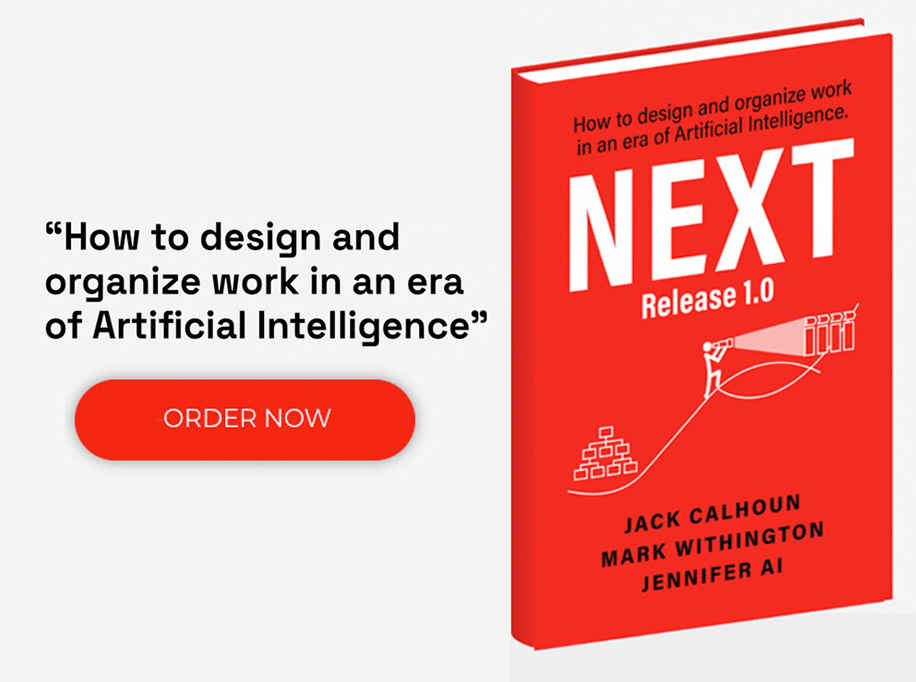One of the keys to successful business transformation is whether teams and employees can unlock the full potential of processes and tools. When it comes to tools, devices in the realm of technology and trade likely come to mind, but something else also needs to be considered: Strategic Learning and Development. Strategic Learning and Development is an organization’s ability to identify, prioritize, build, and manage skills to fulfill the vision, and it is a powerful asset.
Unfortunately, many companies quickly overlook the value of corporate Learning and Development (L&D) or corporate training and development, often blaming difficulties in measuring L&D ROI, sometimes even viewing it as an outright sunk cost. In other instances, business leaders acknowledge the long-studied value of investing in L&D but fail to deliver impactful L&D programming. They “talk the talk” but do not “walk the walk.” Program design, metric definition, tracking and evaluation, and the realities of simply implementing Learning and Development programs throughout an organization are lost in the mix or deemed too much to take on in addition to other running projects that may display more immediately visible strategic value.
So, why is learning and development important? In this guide, we explain why L&D training is vital for retention, zoom in on how L&D affects the healthcare industry, and then provide tips on how to use L&D to increase employee retention.
Why Training is Important for Employee Retention
When making a case for strategic L&D, there are more than enough angles to take:
- It’s a means to uphold compliance requirements.
- It is integral in the adoption of new technologies or processes.
- It can contribute to overall improvements in workforce performance, product design, and business operation.
Another highly critical and often overlooked area in which strategic Learning and Development can benefit an organization is employee retention.
The post-pandemic economy has created an employment crisis across all industries, and organizations need help attracting, hiring, and retaining talent. While part of this hiring crunch results from organizations recovering from their pandemic-related adjustments – new ways of doing business driving demand for new skills or rebuilding staff following layoffs last year – the other piece is workers who have reevaluated their priorities in the workplace. For many workers, securing opportunities better aligned with their core values while providing a pathway for personal and professional growth has become critical for navigating their career choices. A Learning 2021 Pulse Survey found “reskilling and training on new products and new services launched as a result of COVID-19” ranked at highest priorities for workers at 68% and 42%, respectively. The survey found similar enthusiasm for additional training and communication regarding new regulations, processes, onboarding, and reopening procedures. People want a better quality of work life; pay, benefits, and title simply no longer cut it.
Zoom In: Learning & Development in Healthcare
Learning and development can take many forms, especially as you dissect individual industries’ needs and best practices. The healthcare industry was undoubtedly one of the most deeply affected by the COVID-19 pandemic. It offers an excellent example of where L&D can impact employee retention.
Training and development in healthcare organizations may seem like a no-brainer – after all, it is a highly regulated, technically demanding field at every turn. Yet, much of the technical expertise required to perform various healthcare roles is assumed upfront (e.g., med school, trade schools, etc.), leaving an easy out for internal leaders to overlook continued learning opportunities or train staff on other areas.
From the hands-on medical staff (doctors, nurses, aides, etc.) to business administration staff (finance, operations, customer service, etc.), the pandemic created a daunting layer of additional stress to jobs that literally revolve around matters of life or death. In a survey conducted by NSI Nursing Solutions in 2020, 22% of the almost 1,500 nurses surveyed responded that they would retire sooner than originally planned, while 21% wanted to transfer to non-patient care areas. An additional 10%of nurses noted they would like to leave the profession altogether. One hospital in Tucson, Arizona, reported that its nurse turnover had nearly doubled during 2020. Demand for nurses (the largest workforce in healthcare) was estimated to rise well before the pandemic. Signing bonuses are up. Salaries are up. Permanent job vacancies are up.
In addressing the costs of turnover in healthcare and the need for an employee retention strategy, poor employee engagement and weak recruiting/retention programs are top drivers for attrition, in addition to matters of personal safety and frustrations around resource constraints and process inefficiencies. Interestingly, we see opportunities for L&D to solve many of these problems. While being a notable culture-shaping element that can improve the overall employee experience (remember your employees are customers, too), L&D is also a head-on approach to training non-business staff on business procedures and technologies. It can free up staffing and support demands as your employees become more self-sufficient.
For example, a nurse’s number one priority is patient care. Providing ethical and effective patient care should not be delayed by time-consuming inventory management tasks when there are automated systems capable of managing these tasks for them. Additionally, manual communications should not further delay supply chain issues. Most provider organizations have access to tools that are underutilized by most of their staff (many businesses suffer from this, right?). New safety and regulation protocols should not be whispered throughout an organization via email, word of mouth, or thumb-tacked paper notices. Learning and development is a promising answer to many of these problems for healthcare and beyond.
Reducing employee turnover alone has significant financial benefits for any organization. Gallup found that the costs of replacing a single employee may amount to up to two times that employee’s annual salary. Employers see additional gains by capturing long-term employees’ valuable, intrinsic knowledge and strategically avoiding the challenges of competing in an increasingly tight labor market. Pre-pandemic trends had already presented engineering and other skilled-labor shortages. Automation has demonstrated complications to talent sourcing by introducing entirely new roles or merging pre existing roles in complex ways; Gallup also estimated that 85% of jobs needed by 2030 have not yet been invented. How do you hire for that?
How to Use Learning and Development to Increase Employee Retention
Learning and development can drive a variety of wins for employee retention. Organizations must use corporate Learning and Development programs to:
- Drive Employee Engagement to Reduce Attrition.
L&D proves to current employees the company is making a conscious investment in them, promoting a sense of mutual respect and loyalty. Workers are highly conscious of the investments employers make; at its surface, L&D is proof of workforce investment, signals longevity and validates a sense of employer confidence in its individuals. Continual learning contributes to happy employees, and happy employees do not leave their companies. - Attract New Applicants.
Learning and development programs are an attractive, competitive addition to compensation packages when workers are vocalizing refined priorities around the roles they seek and the workplace culture and environments they desire. Many potential hires would prefer to join a company they can grow in rather than pass through. - Upskill to Avoid Layoffs.
Businesses operate in a world of constant change. Customers’ needs change. Processes and technologies change. Jobs change. Upskilling and reskilling employees can solve business-threatening capability gaps. In dire scenarios where layoffs loom, upskilling can be one way to retain as much of your workforce as possible. By equipping your staff with more critical skill sets over time, they become less and less dispensable to your organization and more valuable in paving the way for future stability and growth at your organization. - Upskill to Circumnavigate Talent Shortages.
Seriously, why buy it when you can build it? You do not have to pause your hiring process, drain your recruiters, or compromise your unique staffing needs when trying to fill unprecedented new positions. Often new roles, however out-of-the-norm they may be, will have some overlap with existing roles already well-managed by current staff. By upskilling those staff members to create a best-fit scenario, you will find value in not having to train newcomers on internal processes, culture, or tools that may take even longer to absorb than the desired hard skill sets.
Why is Learning and Development important for employee retention? From initial hire to peak-career retention to late-career knowledge capture, L&D is a way to engage your employees throughout their tenure while strengthening individual-level and org-wide capabilities. Obviously, answering the “why” is only one small part of this conversation.
To learn more, read our eBook, “How to Do Strategic Learning and Development”. To develop comprehensive L&D programs and plans, contact Accelare today.











